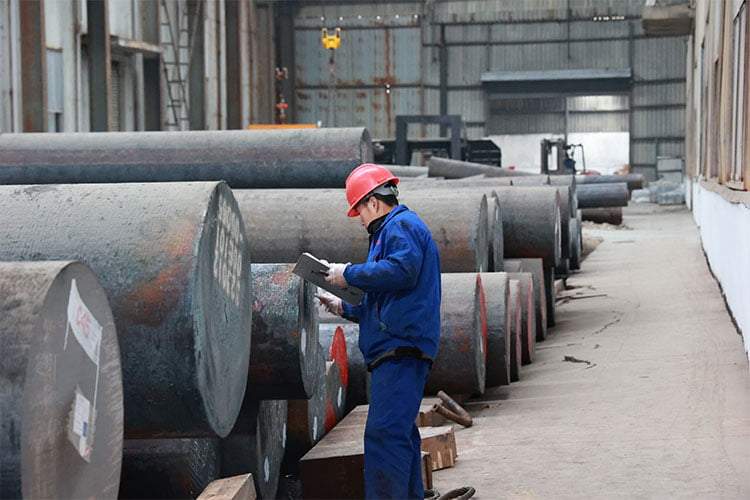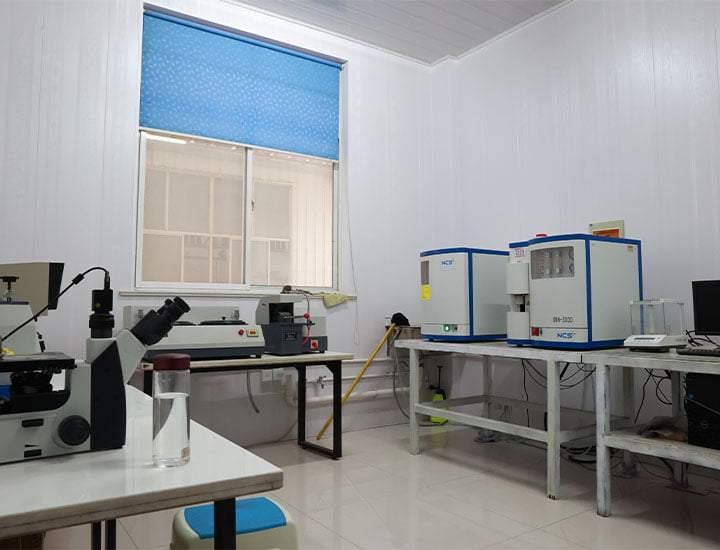Introduction
Steel is a vital material in numerous industries, known for its durability, versatility, and strength. However, not all steel is created equal, which makes steel strength testing a crucial process for ensuring the material’s performance under various conditions. This comprehensive guide explores the various methods of steel strength testing, why it matters, and its application across industries. Whether you’re involved in construction, manufacturing, or engineering, understanding steel strength testing will help you make informed decisions about material selection and quality assurance.
Importance of Steel Strength Testing

Steel strength testing is essential for determining whether a specific steel material meets the required mechanical properties for its intended use. This ensures safety, reliability, and performance, especially in industries where failure could lead to catastrophic results, such as construction, automotive, and aerospace.
Without proper testing, steel might not meet the necessary standards, resulting in potential failures, financial losses, and safety hazards. This testing also helps manufacturers comply with industry regulations and quality control standards.
Methods of Steel Strength Testing
There are various steel strength testing methods, each designed to measure different mechanical properties. Here are the most common testing techniques:
Tensile Strength Testing
Tensile strength testing is perhaps the most widely used method in steel strength testing. It measures the material’s ability to withstand tension before it breaks. This test is particularly useful for applications requiring high-strength steel, such as bridges, buildings, and automotive components.
- Procedure: A steel sample is placed in a tensile testing machine, which applies a stretching force. The amount of force required to break the sample is recorded as the tensile strength.
- Use Cases: Construction materials, machinery components, and structural steel.
Hardness Testing
Hardness testing measures a material’s resistance to indentation or deformation. It’s an important aspect of steel strength testing, especially for products subjected to wear and abrasion.
- Brinell Hardness Test: This method uses a hard steel ball to indent the surface of the sample and measure its hardness based on the size of the indentation.
- Rockwell Hardness Test: A diamond cone or steel ball is used to indent the material, and the depth of the indentation is measured to assess hardness.
- Use Cases: Machinery parts, tools, and other wear-resistant components.
Impact Testing
Impact testing measures the material’s ability to absorb energy during a high-velocity collision or sudden force, which is critical in evaluating how steel behaves in dynamic environments.
- Charpy Impact Test: A steel sample is hit with a pendulum, and the energy absorbed before fracture is recorded.
- Izod Impact Test: Similar to the Charpy test but involves a vertical sample. Both methods are used to assess a material’s toughness and resistance to impact.
- Use Cases: Vehicle frames, bridges, and other structures that need to withstand sudden impacts or dynamic forces.
Fatigue Testing
Fatigue testing evaluates the material’s endurance when subjected to repeated cyclic loading. This is crucial for understanding how steel will perform over time under continuous stress.
- Procedure: A sample is repeatedly subjected to stress at varying levels until it breaks. The number of cycles it can endure before failure is recorded.
- Use Cases: Aircraft components, rotating machinery, and other parts exposed to cyclic loads.
Compression Testing
This method assesses the ability of steel to withstand compressive forces. It is commonly used in the construction industry for materials that will bear significant loads.
- Procedure: A steel sample is compressed until it deforms or breaks.
- Use Cases: Columns, beams, and other structural elements in buildings and bridges.
Factors Influencing Steel Strength Testing
Several factors can affect the outcome of steel strength testing. Understanding these variables can help ensure more accurate test results and better material selection.
Material Composition
The composition of steel plays a significant role in its strength. Steel alloys, including elements like carbon, manganese, and silicon, can enhance specific mechanical properties, impacting how the steel performs under stress.
Heat Treatment
Heat treatment processes such as annealing, quenching, and tempering can alter the steel’s microstructure and, consequently, its strength. For example, quenching and tempering can increase hardness, while annealing can improve ductility.
Sample Size and Geometry
The size and geometry of the sample can affect the test results. Larger samples may show different strengths compared to smaller samples. Standardized sample sizes are usually employed to ensure consistency.
Test Environment
Environmental factors like temperature, humidity, and even the testing speed can influence the results. Testing steel at high or low temperatures may yield different strength measurements due to material behavior under different conditions.
Steel Strength Testing: Comparison of Testing Methods
In the table below, we compare various steel strength testing methods to help you understand their differences and select the appropriate one for your project.
| Testing Method | Purpose | Type | Common Applications |
|---|---|---|---|
| Tensile Testing | Measures tensile strength | Destructive | Construction, automotive, structural steel |
| Hardness Testing | Measures resistance to indentation | Non-destructive | Tools, machinery parts, wear-resistant materials |
| Impact Testing | Measures resistance to sudden impact | Destructive | Vehicle frames, bridges, dynamic load-bearing structures |
| Fatigue Testing | Measures endurance under cyclic stress | Destructive | Aircraft components, rotating machinery |
| Compression Testing | Measures resistance to compressive force | Destructive | Columns, beams, and other structural elements |
Applications of Steel Strength Testing in Industry

Construction
In construction, steel strength testing is used to ensure that building materials can withstand the necessary loads. Tensile, compression, and impact testing are particularly important for ensuring structural integrity.
Automotive
Steel is widely used in the automotive industry for vehicle frames, parts, and safety components. Testing methods like tensile and impact testing help ensure that the steel used in cars can withstand collisions and high levels of stress.
Aerospace
The aerospace industry requires lightweight but extremely strong materials. Fatigue testing is especially critical here to ensure components can withstand the high-stress cycles experienced during flight.
Manufacturing
In manufacturing, particularly for tools and machinery, hardness testing is essential to assess wear resistance. This helps ensure that steel components can endure harsh operating environments and last longer.
Conclusion
Steel strength testing is an essential process for ensuring the safety, durability, and performance of steel across various industries. From construction to automotive and aerospace, different testing methods help determine whether the steel meets the required standards for strength, hardness, and impact resistance. Understanding these tests and the factors that influence their results can guide you in making better material choices, ensuring quality control, and preventing potential failures.
Steel strength testing continues to be an evolving field, with advancements in testing technologies providing more accurate and efficient results. Whether you’re selecting materials for a construction project or developing a new automotive design, steel strength testing plays a pivotal role in achieving success.
FAQ
What is the most accurate steel strength testing method?
The most accurate testing method depends on the type of strength you’re testing. Tensile testing is highly accurate for measuring how much pulling force steel can withstand, while hardness testing is ideal for determining resistance to indentation.
Can steel strength testing be conducted on-site?
Certain non-destructive methods, like hardness testing, can be done on-site with portable devices. However, more comprehensive tests, such as tensile and impact tests, usually require lab equipment.
How often should steel strength testing be performed?
Testing should be done during the manufacturing process, after any heat treatments, and before the steel is used in critical applications. Periodic testing is recommended for high-stress environments, such as aerospace or construction.
Is tensile testing destructive?
Yes, tensile testing is a destructive method. The sample being tested is pulled until it breaks to measure its tensile strength.
Can steel strength testing be done on all types of steel?
Yes, steel strength testing can be conducted on all types of steel, including carbon steel, stainless steel, and alloy steel. Different types of steel may require specific testing methods to accurately measure their properties.
